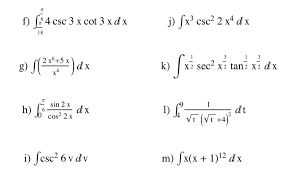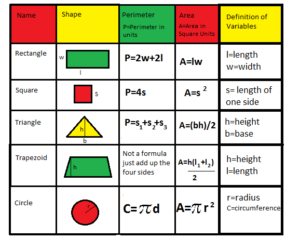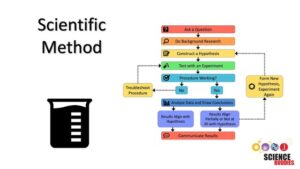Writing a research paper can feel like climbing a mountain—overwhelming at first but incredibly rewarding once completed. Whether you’re a high school student working on your first term paper or a college student preparing a thesis, knowing how to plan, research, and write effectively can make a big difference. At Study Rhino, we believe that mastering research paper writing is a valuable academic skill that will serve you in every subject area.
In this guide, we’ll share practical tips to help you write a strong, well-organized, and compelling research paper—from choosing a topic to final proofreading. Let’s dive in!
1. Understand the Assignment First
Before you start researching or writing, make sure you thoroughly understand your assignment. Ask yourself:
- What is the topic or question?
- What is the required length?
- What citation style should be used (APA, MLA, Chicago, etc.)?
- When is the deadline?
- Are there specific sources or formats required?
Tip: Don’t hesitate to ask your teacher or professor for clarification if you’re unsure about any part of the assignment.
2. Choose a Focused Topic
A common mistake students make is choosing a topic that is too broad. For instance, “Climate Change” is too general. Instead, narrow it down to something like “The Impact of Climate Change on Coastal Cities in the United States.”
A focused topic:
- Is specific and researchable.
- Has enough credible sources available.
- Matches the length and depth required for the paper.
Tip: Try using the “who, what, where, when, why” method to refine your topic.
3. Conduct Preliminary Research
Before creating an outline or writing, do some initial research to:
- Understand the current discussions or debates around your topic.
- Identify credible sources like academic journals, books, and reputable websites.
- See if your topic is viable and supported by enough information.
Use academic databases such as Google Scholar, JSTOR, or your school library’s database.
Tip: Keep a record of all the sources you find useful—this will save time when you create your bibliography.
4. Create a Strong Thesis Statement
Your thesis statement is the central argument or claim of your paper. It tells the reader what to expect and sets the direction for your writing.
A good thesis statement should be:
- Clear and concise.
- Debatable (it should present an argument, not a fact).
- Specific enough to guide your paper.
Example:
Weak thesis: Pollution is bad for the environment.
Strong thesis: Air pollution from industrial factories significantly increases respiratory issues in urban populations.
5. Develop an Outline
An outline serves as a roadmap for your paper. It helps you organize your thoughts and ensures your arguments are logically structured.
A basic structure includes:
- Introduction
- Hook
- Background information
- Thesis statement
- Body Paragraphs
- Topic sentence
- Supporting evidence and examples
- Analysis and explanation
- Conclusion
- Restate thesis
- Summarize key points
- Final insight or call to action
Tip: Each body paragraph should focus on a single idea that supports your thesis.
6. Start Writing: Introduction Comes Last (Sometimes)
It’s okay to skip the introduction and come back to it later. Many writers find it easier to write the body first and then craft an introduction that fits the paper perfectly.
Still, when you write your introduction, aim to:
- Grab attention with an interesting hook (a question, statistic, or quote).
- Provide context or background information.
- Clearly state your thesis.
7. Use Credible and Varied Sources
Quality research papers rely on credible, peer-reviewed, or scholarly sources. Depending on your topic, this could include:
- Academic journals
- Books by experts
- Government reports
- Interviews or first-hand accounts
- Reputable news organizations
Avoid using:
- Wikipedia (use it only for background info)
- Blogs or non-expert opinion pieces
- Unverified online sources
Tip: Try to use a mix of primary and secondary sources for a well-rounded argument.
8. Integrate Evidence Effectively
Once you have your sources, use them to support your claims with quotes, paraphrasing, or data. But don’t just drop in a quote—analyze it. Explain how it supports your point.
Use signal phrases like:
- According to Dr. Smith…
- A 2023 study in Nature..
- As reported by the World Health Organization…
Always cite your sources properly to avoid plagiarism.
9. Write in Clear, Formal Language
Your tone should be formal and academic. Avoid slang, contractions, or overly casual expressions. But don’t overcomplicate—write in a way that’s easy to understand.
Dos:
- Be concise.
- Use transition words (however, moreover, therefore).
- Write in the third person (unless otherwise specified).
Don’ts:
- Use “I think” or “I believe” (unless allowed).
- Fill space with fluff or vague statements.
- Copy-paste from sources (plagiarism alert!).
10. Revise for Content and Clarity
Once your first draft is done, take a break and come back with fresh eyes. Revision is where great papers are made.
Check for:
- Logical flow between paragraphs
- Strong topic sentences
- Clear thesis support
- Unnecessary repetition or off-topic sections
Tip: Read your paper aloud or ask a friend to read it for feedback.
11. Proofread for Grammar and Style
Editing and proofreading are two different steps:
- Editing focuses on improving clarity, structure, and style.
- Proofreading checks for spelling, grammar, punctuation, and formatting errors.
Use tools like Grammarly, Hemingway Editor, or your word processor’s spelling checker. But don’t rely on them 100%—always review manually too.
12. Format Your Paper Properly
Follow the required formatting style consistently throughout your paper, including:
- Title page
- Font size and type (usually 12-point, Times New Roman)
- Margins (1 inch)
- Line spacing (usually double-spaced)
- Proper in-text citations and bibliography
Popular citation styles include:
- APA (used in psychology, education, sciences)
- MLA (used in humanities)
- Chicago (used in history and some social sciences)
Use a citation tool like Zotero, Mendeley, or EasyBib to help manage references.
13. Avoid Plagiarism at All Costs
Plagiarism is using someone else’s work or ideas without proper credit. Even accidental plagiarism can have serious academic consequences.
To avoid plagiarism:
- Always cite your sources.
- Don’t copy-paste blocks of text.
- Paraphrase properly (change both words and structure).
- Use plagiarism checkers before submitting.
14. Manage Your Time Wisely
One of the biggest challenges in writing a research paper is time management. Avoid last-minute stress by breaking the task into smaller steps:
- Pick a topic – Day 1
- Conduct research – Days 2–4
- Outline and plan – Day 5
- Write draft – Days 6–8
- Revise and edit – Day 9
- Final check and submission – Day 10
Use tools like Trello or a simple planner to track your progress.
15. Use University or School Resources
Many schools offer writing centers, online guides, and tutoring support. These can be extremely helpful for understanding citation rules, revising drafts, or getting feedback.
Don’t overlook:
- Your teacher’s office hours
- Library help desks
- Writing workshops or webinars
Final Thoughts
Writing a research paper is not just about collecting facts—it’s about learning to think critically, organize information, and present an argument in a clear, academic way. With good planning, strong research, and consistent effort, anyone can write an excellent paper.
At Study Rhino, we’re here to support students through every step of their academic journey. Keep practicing, stay curious, and don’t be afraid to ask for help when needed.
Happy researching—and happy writing!
Want more tips on academic success?
Explore our other resources on study strategies, time management, and exam prep at
Let me know if you’d like this in a downloadable format like PDF or need it adapted for a specific age group or education level!




